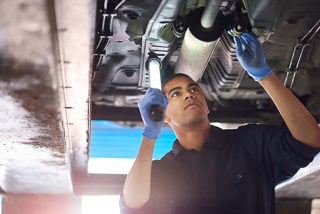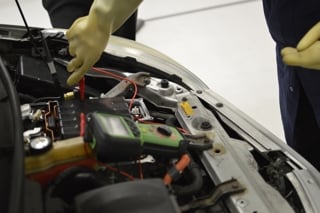Increased labour rates, long lead times for new vehicles and pressure on autumn MOT slots risks escalating service, maintenance and repair (SMR) costs, says Venson Automotive Solutions.
Fleets are being forced to extend lease lengths faced with the supply of new cars and vans squeezed.
Fleet and business company car registrations were down by 17.6% in July, when compared to the same month last year, because of the ongoing semiconductor shortage.
“Longer leases inevitably mean extra MOTs, servicing and tyres, as well as increased wear and tear, but some judicious fleet management can really help to keep those overheads to a minimum,” said Alison Bell, operations director at Venson Automotive Solutions.
“Every fleet is unique and so lease extensions will affect each differently.
“The first step in planning SMR cost savings is to examine the overall fleet in a holistic way.”
Venson suggests not only looking at the obvious legislative costs, but also reviewing the fleet profile and how it is being used to see if there is room for manoeuvre.
The company also advises examining the geography of where fleet vehicles are being driven. If for example a fleet is mainly cars doing low mileage, then SMR costs may be able to be contained.
Vans that are work horses, however, might incur higher costs, especially if there are issues with driver incurred incidents - where perhaps driver training could help.
Of course, the terrain where vehicles are being used can create additional SMR costs; there may be vehicles on fleet doing low mileage but being used in harsh conditions such as off road.
Equally, there may be a vehicle doing the majority of its miles on the motorway and therefore SMR costs are likely to be lower.
Bell concluded: “As new car supplies continue to be under pressure and manufacturers continue to predict greater than six-month lead times, integrating techniques to keep SMR costs to a minimum is increasingly important.
“Ultimately though, it is a balance between overall fleet requirements, operational and financial objectives, minimising downtime and satisfying driver need.
“It’s a tricky tightrope to walk, but one that today’s fleet manager is fully equipped to handle.”
Seven key strategies to stop spiralling SMR budgets
- Vehicle Healthcheck: Encourage weekly checks by the driver to avoid minor issues becoming a major problem. Implement a process to ensure the checks are being carried out and any faults rectified. A cracked windscreen reported early is likely to be repairable but if left will likely need replacement. Tyre checks will keep a vehicle legal and avoid distress tyre purchases which remove the ability to get the best tyre prices.
- Mileage inspection: Check the mileage of all your vehicles and where possible switch low mileage vehicles to those drivers who are covering the most miles.
- Avoid overloading: Manage vehicle loading to ensure vehicles are not being overloaded which can have an impact on steering and tyre wear.
- Educate drivers: Help drivers understand the part they play in helping to control costs.
- Balance operational and financial objectives: For example, don’t use a panel van for certain roles when an estate car could suffice.
- Examine SMR incidents by vehicle type and manufacturer: Is there a trend of a particular SMR event by a manufacturer model? Your fleet supplier should be monitoring and referring to the manufacturer if necessary.
- Keep watch on vehicle usage: Are there vehicles that are currently underutilised and others over utilised. If so, swap them around or use those not being driven regularly as pool cars, rather than hiring cars. Telematics data can help with this process.
























Login to comment
Comments
No comments have been made yet.